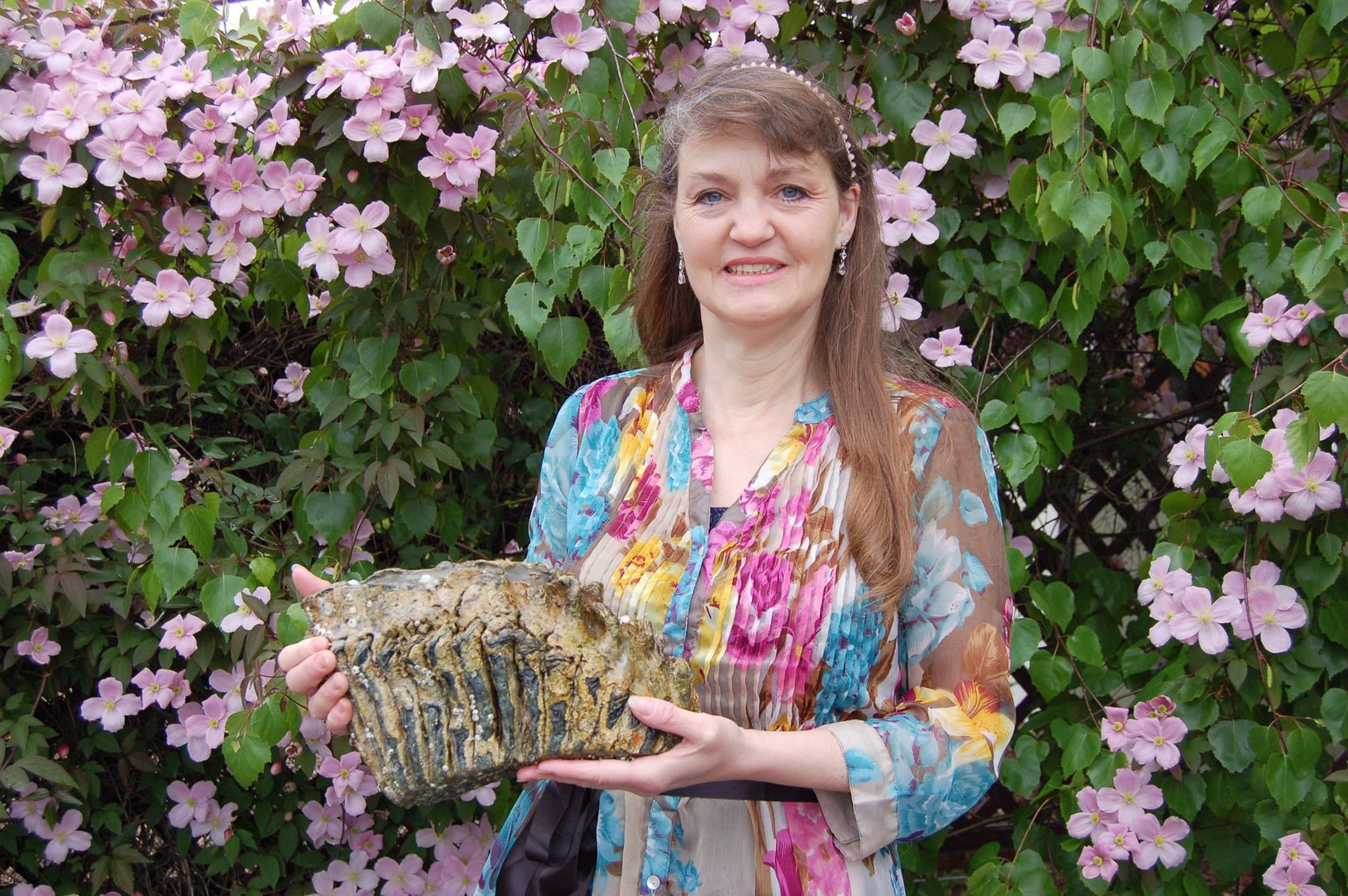SEQUIM — Sequim residents Lori Christie and Dean Flowers were taking their regular walk along a Sequim public beach when they stumbled upon a rare find: a Columbian mammoth molar weighing just over 10 pounds.
Christie, a managing broker at JACE Real Estate in Sequim, said she is a regular hiker and hikes about 20 miles a week.
She and Flowers were looking for petrified wood and rocks along a local beach — where it is permissible to pick up objects — when they saw something different from the surrounding rocks.
“When we looked down at it, Dean remarked it didn’t look like other rocks,” Christie said.
“The flat surface was showing and it had rocks around it.”
Christie and Flowers thought it could be a fossil so they buried it under driftwood and went back to get it the next day. Christie said the object weighed 10 pounds.
“We wanted to identify it and we didn’t want to take it off the beach unless we knew what it was,” Christie said. “After we found it, we hid it and we were just kind of excited.”
She said Flowers thought it could be a mammoth molar and looked up information online before they picked it up the following day.
On May 9, Christie and Flowers took the potential mammoth molar to the Burke Museum at the University of Washington in Seattle to identify the object.
Christie said she spoke with Ronald Eng, the paleontology and geology collections manager, who confirmed with museum staff the object was a Columbian mammoth molar.
“Both of us were in shock,” Christie said. “There are artifacts here and fossils to be found, but it’s not real common to find them.”
Eng said he estimated the molar was 19,000 to 20,000 years old from a 35- to 40-year-old adult Columbian mammoth.
“We are always interested to hear about them,” Eng said of the fossil. He added the museum is interested in these particular finds because it allows the museum to keep a record of where mammoth remains are found.
Eng said the discovery was due to the weathering of the bluffs from the winter weather.
“In spring, after the winter weather has done its thing on the bluffs, things erode out,” Eng said.
He added that, while this is an uncommon find, there have been mammoth remains — such as teeth, tusk and bones — found in eastern and western parts of Washington. He said the most recent remains discovered were found at the southern end of Lake Union in Seattle.
Christie said the museum takes donations but she has decided to keep the fossil. Eng suggested conserving the molar through desalination and preservation methods.
“Mammoth teeth are a series of plates cemented together that tend to fall apart,” Eng said. “They’re not like our teeth that are a solid piece of enamel.”
Once Christie and Flowers preserve the molar, Christie said they would like to contact the Sequim Museum &Arts Center to see if it will display it for the public.
“We want to make it so the public can see it,” she said.
Christie said she and Flowers have decided not to share the exact location of where the molar was found for personal environmental concerns. She said the museum has supported their decision not to share the exact location.
________
Erin Hawkins is a reporter with the Olympic Peninsula News Group, which is composed of Sound Publishing newspapers Peninsula Daily News, Sequim Gazette and Forks Forum. Reach her at ehawkins@sequimgazette.com.

